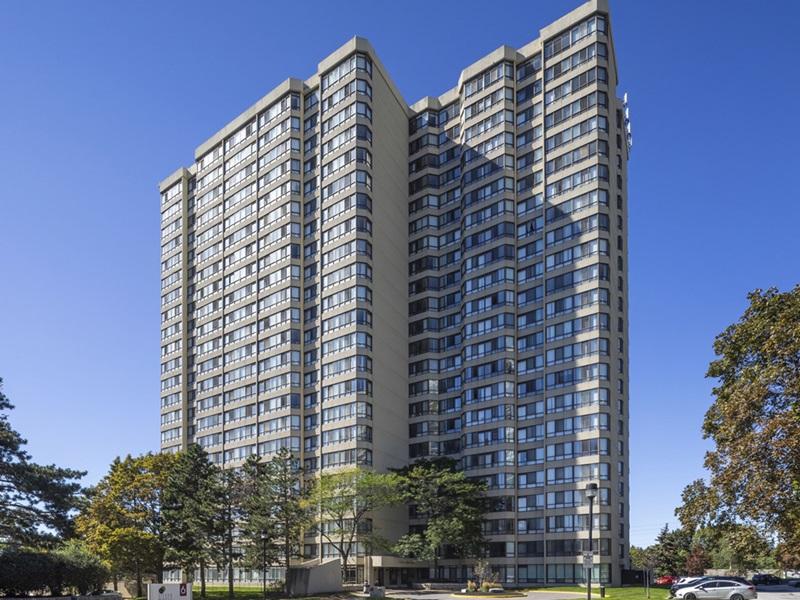
Federal government legislation to remove the GST from purpose-built rental housing construction in Canada is just a start. "Much more" needs to be done to boost the supply and ease affordability and accessibility concerns, a group of industry insiders agreed during an Urban Land Institute Toronto webinar.
The feds announced in September a waiver of the five per cent goods and services tax from purpose-built rental housing construction. Several provinces have also moved to waive their share of the harmonized sales tax (HST) in their provinces (a combined GST and provincial sales tax), and there is hope that others will follow suit.
“Building more purpose-built rental is foundational to livable cities,” said Tricon Residential managing director Andrew Joyner, who moderated the Oct. 2 webinar that explored the housing market and the broader context of current market conditions.
“We need more of it, much more of it and I'm glad we're talking about it today. And I'm glad that governments are now spending more time on trying to be part of the solution.”
While these government moves are positive steps, and they’re pretty much universally welcomed, Joyner and the five panellists believe the lofty housing targets that have been set are probably still unattainable.
“We have a sub-one per cent vacancy rate in Toronto and a recent report from BILD and Urbanation estimates that we need another 300,000 new rental units in Toronto over the next 10 years to restore equilibrium,” said Joyner, whose company is an owner and operator of approximately 37,000 rental homes in the U.S. and Canada.
“But at the same time, purpose-built rental today represents less than 10 per cent of new construction.”
Joyner also noted 25 per cent of apartment project budgets go to various levels of government that are urging developers to build more. About half of that is comprised of HST.
Differences between rental apartments and condos
Finnegan Marshall Inc. is a development cost consulting firm that prepares budgets for purpose-built rentals currently involved with about 25 under-construction projects in southern Ontario.
“When the project is under construction, we act for the lenders who are financing these particular projects, which gives us a great insight on the project right from commencement to completion,” said partner Niall Finnegan, who provided perspective on the differences between purpose-built rental and condominium construction.
Construction began on an average of 4,500 new rental units annually over the past three years in Toronto, according to Finnegan, while 30,000 are needed annually over the next 10 years.
About 23,000 condo units were built annually over the previous seven years before a slowdown over the past year, he added.
Doubling the housing units built each year isn’t feasible with the current labour force, so Finnegan said more of these skills need to be included among immigrants to Canada.
Purpose-built rentals require about twice as much initial equity as a condo because developers don’t have deposits from purchasers, so that gap must be filled with other capital.
Finnegan said condo projects target a 15 to 20 per cent internal rate of return (IRR) on an annual basis, while apartments are a longer-term play — which is why many pension plans invest in them — so that IRR number is lower.
Purpose-built rental units are typically 20 per cent larger than condos, which reduces costs, but Finnegan said they’re often built to higher standards that make them more expensive.
There are development charge reductions for purpose-built rental apartments and fee exemptions for developments built by non-profits and co-ops – as well as for housing units that are considered affordable.
Hard and soft costs have risen
Joyner said apartment construction costs have risen from $375,000 to more than $600,000 per unit over the last five to seven years and interest rates have increased significantly, to five per cent for borrowing on a stabilized purpose-built rental.
Jasmine Cracknell-Young is the vice-president of advisory for Zonda Urban, which provides and interprets housing data in British Columbia, Alberta and Ontario.
She said the primary reason more condos are built than rental apartments is cost, but she’s recently seen more rental activity in Calgary and Vancouver.
Calgary has had an influx of young renters and Cracknell-Young said some condos are being converted to rental apartments. Conversion grants are also available to turn unused office space into housing.
“It's not just one program, it's usually stacked programs that people are using in order to make them financially feasible,” Cracknell-Young said.
Land constraints in Vancouver mean most apartment development is happening through intensification of existing sites as opposed to acquiring new development land, according to Cracknell-Young.
Costs have risen so quickly many development plans have been halted due to uncertainty, said KingSett Capital group head of development Jeff Thomas, whose commercial real estate investment firm has current interests in about 40 high-rise purpose-built rental apartments and condos in Canada.
Finnegan pointed out that, to take advantage of the elimination of the sales tax program, construction has to start by 2030 and be completed by 2035.
The desired returns on new construction in the current challenging economic environment still aren’t available, he said, so plenty of potential developments might be held back and unable to meet the timelines.
Investors have choice when allocating money
Large investors, including pension funds that have traditionally backed apartments, have choices in where they can put their money and the risk-free rate of investing is much higher now than it was two years ago.
“A 10-year U.S. treasury bond is 4.75 per cent today and you could get a bond from a major bank in Canada that's probably six per cent,” Thomas said.
Borrowing interest rates have doubled in a year and Thomas said the yield on cost for purpose-built apartments is in the low four per cent range, so the investment performance has been diluted.
“I think everybody was quite excited about the GST announcement, but the economic benefit of that has been pretty much totally eradicated by the 60-basis point interest rate increases,” Thomas observed.
“That's the economics that the industry is starting to struggle with right now.”
Mwarigha, who goes by one name, is the VP of housing, homelessness, asset sustainability and new development for WoodGreen, a Toronto-based social services agency that offers a variety of programs, including the provision of affordable housing.
It’s responsible for about 1,500 housing units and has an agenda to build 2,000 more in the next 10 years through partnerships with non-profit organizations and private sector developers.
While one of the primary sources of upfront equity for WoodGreen comes from social impact bonds, it’s also heavily reliant on philanthropic donations. Higher interest rates have also had an impact there.
“When the opportunity cost of foregoing an interest (rate) of one per cent versus foregoing an interest of five per cent is put on the table, it has significant barriers for us in terms of getting donations,” Mwarigha explained.
WoodGreen’s last development was completed in 2020 when it received grants of about $200,000 per unit. Available grant money is now down to about $25,000 per unit, according to Mwarigha.
Mwarigha said WoodGreen had plans to develop land it owned as well as through the Housing Now program, in which City of Toronto-owned lands are used to stimulate the development of affordable rental housing within transit-oriented, mixed-income, mixed-use and complete communities.
The costs are currently prohibitive for launching any such developments, so WoodGreen is seeking partnerships with developers.
Other things that would help
Tony Irwin is the president and CEO of the Federation of Rental-housing Providers of Ontario and interim president of the Canadian Federation of Apartment Associations, roles in which he advocates for rental housing.
Some municipalities are more welcoming to rental housing than others, Irwin said, whether it’s through waiving development charges or coming up with creative ways to work collaboratively with developers, apartment providers and owners.
“They know what the need is, they know how big it is and they know that rental housing is a huge part of the solution,” Irwin said.
“New York City's been able to build significant rental housing by giving property tax help to rental construction,” Joyner noted. “So I think that's another another idea.”
Joyner said the City of Toronto has identified unused land sites that could be used to build rental housing, but projects have been slow to come out of the ground.
Mwarigha believes more tax incentives should be offered to investors willing to provide up-front money for affordable housing.
Existing developments could be in jeopardy
Joyner said some apartment buildings under construction are facing emergency capital calls and lenders who are pulling back, which put the projects at risk of not being completed.
“There are about 40,000 units in Toronto, Ottawa and Vancouver that could be delivered on a two-year timeline, but are either starting to be paused or in some instances are being considered for condo conversions because creating that short-term liquidity injection by selling condos is the only way to fund some of these big costs that they're facing because they don't qualify for the HST exemption as it's currently defined,” Joyner said.
“It ultimately also depends on what you're doing on your interest rates for construction financing,” said Thomas. “If you're in a CMHC-sponsored program that locks in your interest rate post-completion, you might not have any interest rate risk there.
“But in the normal course of business, you'd have a construction loan, finish the building and get takeout financing from a major lender. Now, that takeout financing could look so different than it did when you underwrote a project three years ago.
“That could put the viability of it in jeopardy. So I'm sure that there are lots of pro formas under that kind of pressure.”







